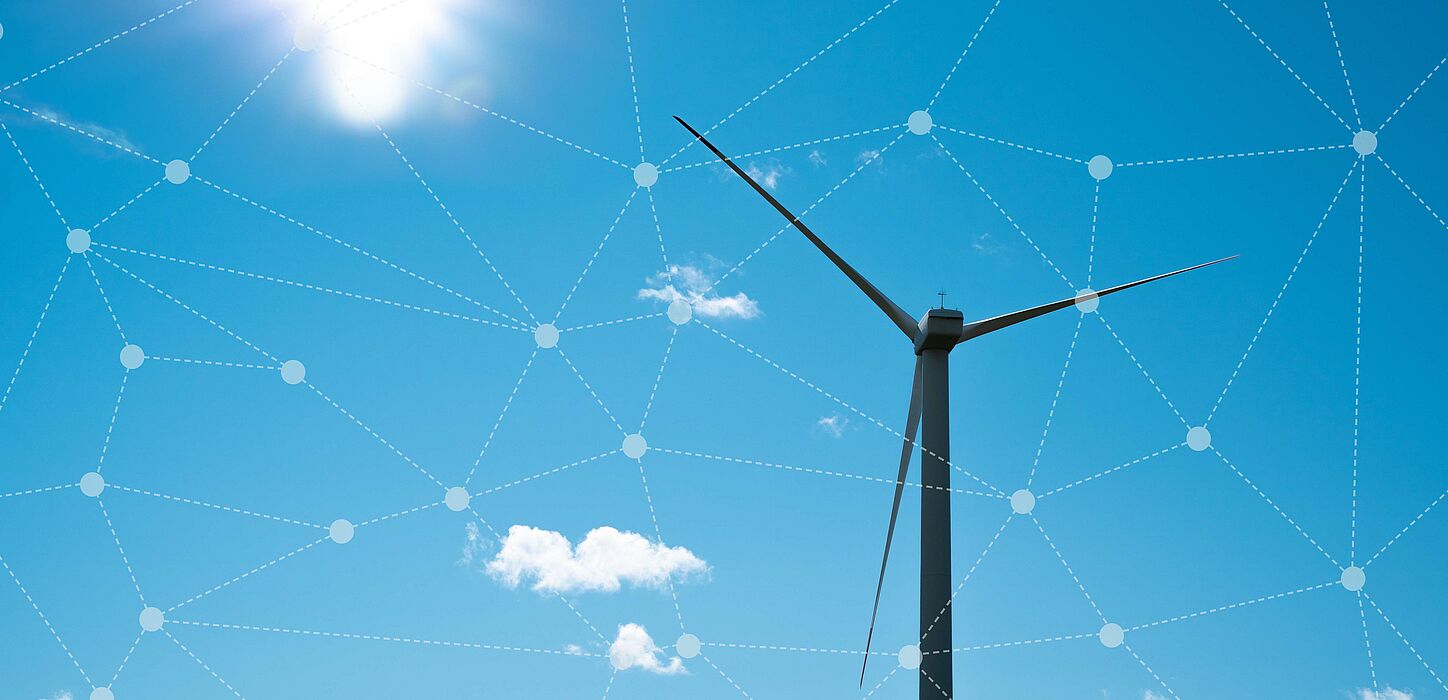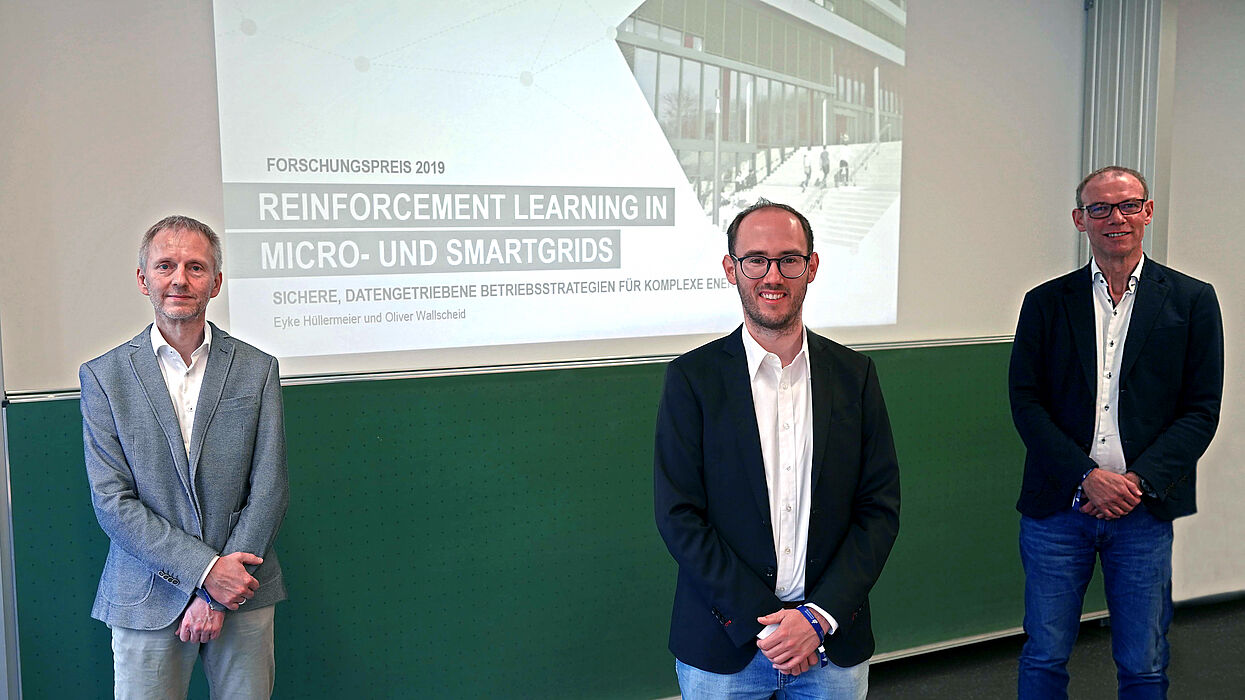Paderborn University Research Prize winners present results
Creating the necessary conditions for a successful and sustainable energy transition is a key factor on the path to carbon neutrality. Back in 2019, Dr Oliver Wallscheid, an electrical engineer at Paderborn University, and computer scientist Professor Eyke Hüllermeier, who moved from Paderborn to Ludwig Maximilian University in Munich at the beginning of the year, therefore set themselves the goal of developing flexible, intelligent energy systems. Two years ago, they received the Paderborn University Research Prize for this work – with prize money totalling €150,000, the university’s highest endowed award. In a presentation open to all students and staff at the university, the two researchers presented the results of their research project, entitled “Reinforcement Learning in Micro and Smart Grids: Secure, Data-Driven Operating Strategies for Complex Energy Systems”, to the university's Executive Board and the Committee for Research and Early-Career Researchers and Junior Academics on Wednesday, 27 October. In their presentation, they demonstrated how artificial intelligence (AI) and machine learning methods can guarantee a stable energy supply in the future. “I’m delighted that once again a highly innovative and socially relevant project has been given the opportunity to be carried out,” enthused Professor Johannes Blömer, Vice-President for Research and Early-Career Researchers and Junior Academics.
From large-scale power plants to micro and smart grids
Conventionally, the energy supply in Germany and Central Europe works on the basis of a top-down system. This means that end consumers get most of their electricity from large central power plants. Synchronous generators ensure even energy distribution and grid stability. “If, due to political decisions, like the phase-out of coal, this system is going to cease to exist within the next few years, we’re going to need alternative systems,” says Hüllermeier. Possible solutions for a sustainable and effective energy transition include micro and smart grids – small grids with electricity generated from renewable sources, a corresponding storage system and local consumers. “Electric car owners who charge their vehicles using their own photovoltaic system are a good example,” explains Wallscheid. The advantage here is that the local generation and use of energy relieves the power grid, thereby reducing the need for any costly and resource-intensive expansion of the grid. The disadvantage: Micro and smart grids are dependent on external factors such as weather conditions, which is why conventional methods of electricity distribution and regulation are not efficient enough here. In combination with fluctuating energy demand, this leads to a lack of supply security – the probability of power outages increases, which can have fatal consequences for the health sector and industry, for example.
Resource and energy efficiency, thanks to machine learning methods
The researchers wanted to counteract this problem using AI. The complex system with a vast volume of data offers a good starting point for this. “AI is now being used successfully in many sectors. In the context of energy systems, however, there has been very little research to date,” continues Hüllermeier. Precisely because power grids are safety-critical applications, the use of data-driven machine learning methods – the behaviour of which can be controlled only indirectly – proved a major challenge for the research project. The researchers were, however, ultimately able to successfully find a solution to their problem.
Open source software for optimising sustainable energy systems
The result is a software tool for the simulation and control optimisation of micro and smart grids using reinforcement learning (RL). With this method, a controller, or ‘agent’, is powered by the sensors in the system to perform various actions, such as charging and discharging the battery storage. The system then receives feedback on whether the relevant action was good or bad. The AI can leverage this feedback to improve with each execution. The risk: Even one single wrong decision can lead to complete system failure. The project group has therefore developed a simulation environment in the form of a modular power grid model in which AI algorithms can be taught and tested within flexibly changing scenarios. This makes it possible to ascertain the optimal settings for the safe and intelligent AI operation of energy systems. The software has been designed as an open source project, which not only means that it can be used free of charge, but also that its source code can be viewed and modified by third parties. This should enable the system to be constantly expanded and improved on. It also laid the foundation for successful practical application in the lab, where a scaled stand-alone network was operated by the AI.
“Despite difficult circumstances – with the pandemic and Mr Hüllermeier’s move to Munich – we were able to successfully complete the research project. I’d like to thank the entire team for this,” sums up Wallscheid.


